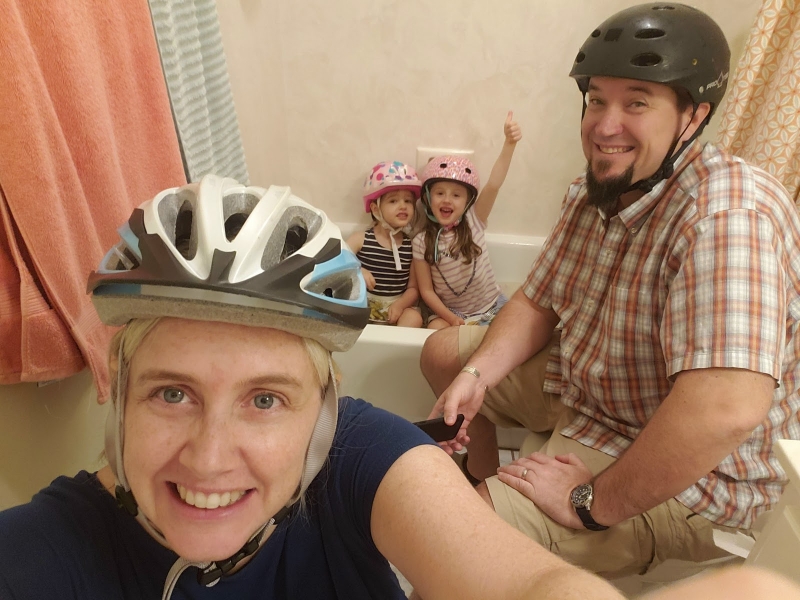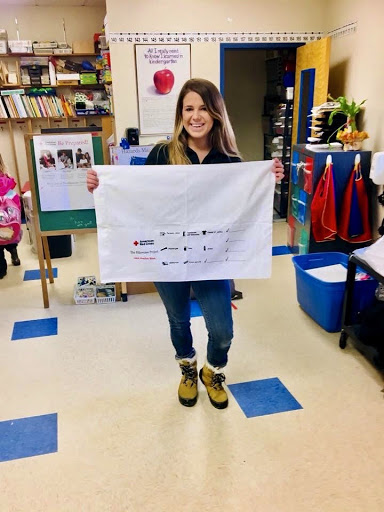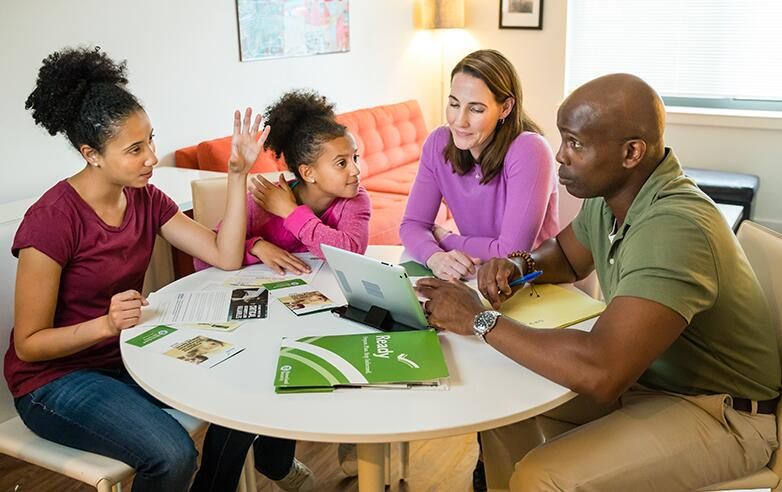September is National Preparedness Month, and we at the Disaster Preparedness Program understand that disasters can happen at any time, often without warning. They affect everyone in a community, including children. Children make up roughly a quarter of the U.S. population; and emergency planning, response, and recovery efforts must consider the unique needs of children of all ages. The best way to ensure children and communities are safe during an emergency is to help them prepare before a disaster occurs.
For all of us, disasters are scary and challenging to cope with, luckily for parents and guardians, there are ample resources to help children grow up prepared. This blog is divided into two parts, part one discusses how best to communicate with children about disasters, and part two covers education programs and activities for children that can help them feel empowered in their own level of preparedness.
Part 1: Communication is Key!
By Kimberly Page Albins
I'm a mother of two little girls, 3 and 5. We live on the Gulf Coast, where there is potential for tornadoes, hurricanes, flash floods, severe thunderstorms, and wildfires, to name a few. So, preparing for disasters is something we deal with regularly. As my girls get older and start asking questions, I have wondered what exactly I should share with them. Turns out, I’m not alone, I reached out to fellow parents and guardians to determine what sort of questions they have regarding talking to children about disasters, and the questions poured in!
Commander KJ Green with the U.S. Public Health Service and director of Behavioral Health and Wellness at NOAA, pointed me to resources on the topic. Below is some information to help with the most common questions I received:
1. Should I talk with children about disasters or is it better to try to protect them from knowing about these scary things?
From my research, there is broad consensus among child psychology experts that it is better to communicate with your child about disasters rather than leaving them in the dark. Children are observant. They know when things change, and they know when their parents or guardians are scared or facing challenging situations. It is important to communicate with your child so they understand what is going on and so that you, as a parent or guardian, can quell irrational fears.
Young kids are especially good at coming up with worst-case scenarios. Allowing them a chance to ask questions and learn about what is going on from their most trusted resource (you) will go a long way at keeping them safe, calm, and happy. In her article, Rachel Ehmke with the Child Mind Institute outlines some excellent advice: take cues from your child, don’t overwhelm them with details they don’t care about, answer their questions as best as you can, and don’t be afraid to say, “I don’t know.”
2. How do I know what information is age-appropriate? Should I limit the information I tell or show a child?
This was the most common question I received. We as parents or guardians don’t want to scare or scar children. Two pieces of advice were repeated in multiple sources that I found. First, It’s recommended you be honest and straightforward and use age-appropriate words when discussing disasters. Second, you should try to limit children's exposure to images of the disaster. For instance, you may want to avoid allowing a child to repeatedly see scary images on television.
So what is age-appropriate? I found multiple resources that walk you through what to say to a child before, during, and after disasters. One resource was developed by The National Child Traumatic Stress Network, whose mission is to raise the standard of care and improve access to services for traumatized children, their families, and communities throughout the United States. This group has developed an app called “The Help Kids Cope App.” This app provides scripts to help guide parents and guardians through these tough conversations. The scripts are broken down by age group, by disaster type (e.g., tornado, hurricane, earthquake) and by whether it is before, during, and after the event. I now have this app on my phone and feel so much more prepared to talk with my girls the next time we are huddled together during a tornado warning!

3. How will children react when they are coping with a disaster?
Children's coping mechanisms are tested during disasters, and their reactions will depend on the severity of the impact as well as their personality. Depending on the severity of the situation, some may brush it off and go right on with life as if nothing ever happened, while others experience extreme mental and physical symptoms. Young children may regress in their language or potty training skills, and some could have nightmares or fear of going to sleep. Older children may have headaches or stomach aches, or play more aggressively than before. Teens may feel shame about their reaction to the event and could withdraw from friends and family. The CDC has great information on what to expect from kids coping with emergencies that is broken down by age.
Preparing ourselves and children for disasters takes intentionality and time. Keep reading to learn about some great activities that help empower kids to be and feel prepared for disasters!
Part 2: Youth Preparedness Education Programs and Resources
By Alyson Finn

Before working as an Emergency Planning Specialist for NOAA’s Disaster Preparedness Program, I worked for the American Red Cross as a senior disaster program manager, where I had the opportunity to work in youth preparedness education. As a disaster instructor, I saw first-hand how important disaster preparedness programs were, especially to children and communities located in at-risk areas.
Youth preparedness education programs play an essential role in empowering children to deal with the complexities of disaster and be resilient in the face of disasters. Through these programs, students are provided age-appropriate preparedness materials that include engaging activities and easy action steps to help them and their families prepare for disasters.
The Pillowcase Project is designed for youth ages 8-11, with the aim to increase awareness and understanding of natural hazards; teach safety and emotional coping skills; and the importance of personal preparedness. The American Red Cross also has other programs aimed at making preparedness fun and easy with preparedness activities that everyone in your home can participate in, such as building an emergency preparedness kit or making an evacuation plan.
The American Red Cross is just one of many organizations that provide free youth preparedness education programs and materials for students across the country. The Federal Emergency Management Agency (FEMA) website has games, tools and information that can help everyone before, during, and after disasters. Kids can become a disaster master! On their website for kids (Ready.gov/kids) you will find age-appropriate games and programs that help to practice preparing for emergencies.
Starting these efforts early is essential, and can help you and your children feel more confident during actual emergencies and disasters. Talking to children and getting them involved in disaster preparedness activities now can help reduce their fears and anxieties later.

Additional Resources:
-
Create a Family Emergency Communication Plan: Communication networks, such as mobile phones and computers, could be unreliable during disasters, and electricity could be disrupted. Planning in advance will help ensure that all the household members know how to reach each other and meet up in an emergency.
-
Child Mind Institute:Talking to Kids About the Coronavirus Crisis
-
Youth Preparedness Activities: Courses and programs to help children develop the skills and confidence they may need in an emergency.
-
FEMA Youth Preparedness Tools: Existing programs, curriculums, and resources that may be of interest to those starting, or interested in finding youth preparedness information.
